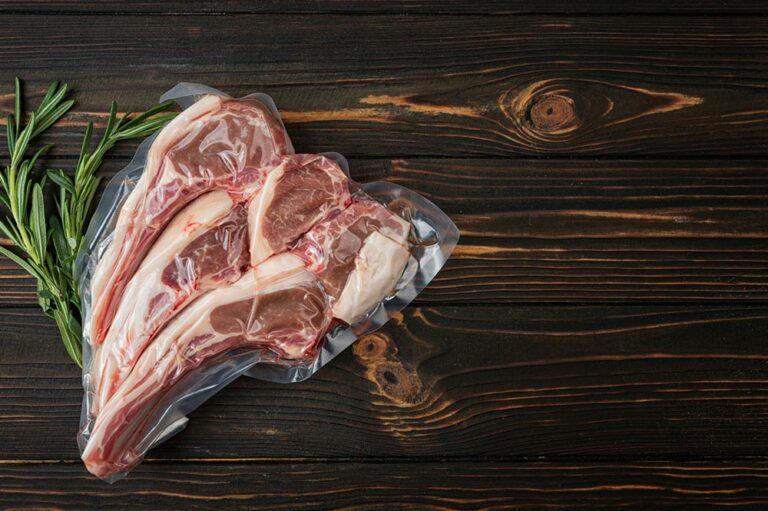14 easy tips for using food vacuum sealers

In the world of kitchen appliances, food vacuum sealers have become indispensable tools for preserving freshness and extending the shelf life of food items. As individuals increasingly embrace the benefits of vacuum sealing, mastering the art of using food vacuum sealers is essential. With some easy tips for using food vacuum sealers, one can seamlessly integrate vacuum sealing into their kitchen routine and make the most of these practical devices.
Choose the right bags
Selecting the right bags is the most significant aspect of successful vacuum sealing. Users should opt for high-quality, textured vacuum sealer bags as they effectively expel air. These bags provide a sturdy barrier against moisture and are available in a variety of sizes, catering to diverse storage needs, from individual portions to family-sized packages.
Seal before vacuuming
It is important to begin the vacuuming process after sealing the open end of the food bag. However, it is also one of the often overlooked steps in this process. This simple measure prevents liquids or particles from interfering with the sealing process, ensuring a tight and secure closure. It is a basic yet effective tip for maintaining the integrity of the vacuum sealed package.
Allow space for proper sealing
Users should exercise caution by leaving ample space between the food and the bag’s top edge. This not only facilitates a proper seal but also prevents potential leakage during the vacuuming process. Adequate spacing ensures that the sealer can efficiently create a secure closure without encountering obstructions.
Understand the moisture factor
A freeze-first technique is recommended for sealing items with higher moisture content, such as fruits or marinated meats. By partially freezing these items before vacuum sealing, one can mitigate the risk of excess moisture compromising the sealing process. This practical approach enhances the effectiveness of vacuum sealing for a broader range of food items.
Handle sharp edges with care
When sealing food items with sharp edges, like bones or seafood shells, users are advised to employ caution. Placing a buffer, such as a folded paper towel, between the sharp edges and the bag’s sealing area helps prevent punctures or damage to the vacuum sealer bag. This straightforward precautionary measure safeguards both the integrity of the bag and the longevity of the vacuum sealer.
Arrange bulk items on a baking sheet
For users aiming to vacuum seal bulk quantities of items like vegetables or berries, employing the flash-freezing technique is a game-changer. By arranging the items on a baking sheet and freezing them individually before transferring them to vacuum sealer bags, users can prevent clumping and ensure that each piece maintains its distinct shape during the vacuuming process.
Consider double sealing
To fortify the seal and enhance the longevity of vacuum sealed items, a double-sealing strategy is recommended. This can be done by leaving space between the first and second seals, reinforcing the closure. This additional step adds a layer of security, particularly for food items intended for extended storage.
Ensure routine maintenance of the sealer
Regular maintenance is necessary for ensuring the longevity and efficiency of food vacuum sealers. Cleaning the sealing area and inspecting the vacuum sealer for any signs of wear or residue is a simple yet crucial practice. Further, following the manufacturer’s guidelines for maintenance not only preserves the sealer’s functionality but also contributes to consistent and reliable performance.
Consider smart labeling for organization
Maintaining an organized freezer or pantry becomes effortless with the addition of smart labeling. Users are encouraged to label each vacuum sealed bag with the contents and the date of sealing. This simple step streamlines meal planning and minimizes food waste, ensuring that users can easily identify items in storage.
Store vacuum sealed bags properly
Proper storage of vacuum sealed bags is important for preserving the quality of the contents. Users should store sealed bags in a cool, dry place, away from direct sunlight or extreme temperature fluctuations. This basic practice safeguards the freshness of vacuum sealed items and maximizes their shelf life.
Pre-freeze liquid and moist items
For foods with high moisture content, such as soups, stews, or sauces, a pre-freezing step is key. Users can portion out liquid or moist items into flat, freezable containers or use silicone molds to create individual servings. Once frozen, transfer these portions into vacuum sealer bags for a mess-free sealing process. This technique prevents liquids from being drawn into the vacuum sealer, ensuring a tight seal and avoiding potential damage.
Vacuum seal delicate items with manual control
Soft items like bread, pastries, or delicate fruits can be challenging to vacuum seal without crushing. In such cases, utilizing the manual control feature on the vacuum sealer becomes invaluable. By manually initiating the vacuuming and sealing process, users gain better control over the pressure, allowing for a gentler seal on delicate items without compromising their integrity.
Avoid overfilling bags for optimal sealing
To ensure a successful seal, users should avoid overfilling vacuum sealer bags. Leaving a sufficient margin at the top of the bag allows the sealer to create a secure closure without encountering obstacles. Overfilling may hinder the effectiveness of the vacuum sealing process, potentially leading to imperfect seals and compromising the freshness of the stored items.
Check sealing gaskets regularly
An often-overlooked maintenance tip is regularly checking the sealing gaskets of the vacuum sealer. Over time, these rubber gaskets may wear out or accumulate debris, affecting the sealer’s performance. By routinely inspecting and cleaning the gaskets, users contribute to the longevity and efficiency of the vacuum sealer, promoting consistent and reliable results.
Additionally, one should invest in good quality resealable bags to store food. Such bags last a long time, as they can be washed and reused. Some resealable bags are microwave-safe, making it easy to quickly reheat frozen food that had been vacuum-sealed earlier. Further, resealable bags eliminate the need for single-use variants, helping reduce plastic waste.






